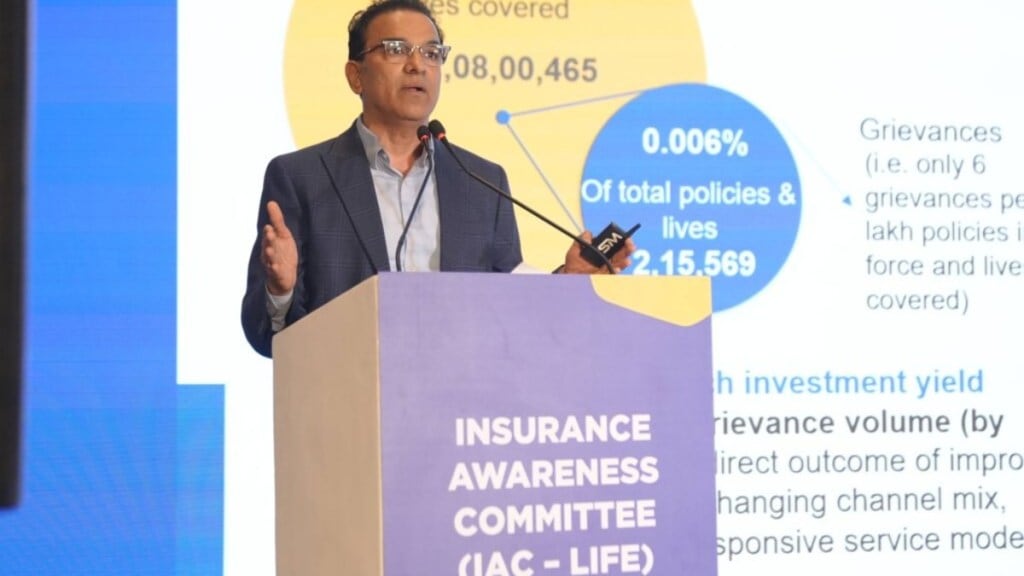Life insurers have urged the government and regulator to allow amortisation of distribution costs to offset the impact of GST rate cut on life policies. Insurance Awareness Committee (IAC-Life) chairperson Kamlesh Rao tells Narayanan V about the GST impact, the ‘Sabse Pehle Life Insurance’ campaign, and other industry issues. Excerpts:
What is the status of the ‘Sabse Pehle Life Insurance’ campaign?
The Life Insurance Council started this campaign with a commitment from all life insurance companies to run it consistently for at least three years. Our research shows that awareness of life insurance is not a problem at all. The bigger challenge is converting awareness into consideration. So, our campaign now focuses on product categories like term, savings, and retirement. We also talk about child plans because research shows financial well-being is top of mind for consumers, with children’s financial planning being the second largest priority. The first phase of the campaign is nearing its end. Normally, the second phase would have begun around December or January. But with the government making the GST on life insurance zero, we are evaluating if this is the right time to highlight the benefits to the customers. The GST rate cut has given new talking points to distributors. My sense is the renewed vigour in distribution will help them reach out to far more people, prospecting will rise, and if throughput is managed well, the industry will benefit immensely.
But the industry still has concerns with input tax credit (ITC).
We made our representations to the Department of Financial Services (DFS) and the Central Board of Indirect Taxes & Customs (CBIC). Last month, we also met the new Irdai chairman. We spoke about measures that can help both the government’s objective of full GST rate transmission and the insurance industry’s concern on ITC. I don’t know If I can speak in detail. But, one suggestion was made regarding the IFRS regime, which will happen in two years from now. Today, the entire distribution cost is taken upfront. The IFRS regime, on the other hand, allows amortisation of distribution costs. We have asked if the ITC we lose on distribution costs could similarly be amortised over the premium paying term (PPT). For example, if GST is ₹5 and the PPT is 10 years, then the impact in the first year would be only ₹0.5. Whether it’s ITC on distribution costs or the GST itself, allowing it to be amortised would create a breather. Either approach, if feasible, would make a big difference for life insurance companies.
How is the Council planning to increase insurance penetration?
Focus on the state-level insurance plan was one of the key agenda during our meeting with the Irdai chairman. He also said rural penetration at the industry level should be about 15%. On the same day, the Bima Sugam website was also launched.
Today, Pradhan Mantri Jeevan Jyoti Bima Yojana (PMJJBY) caters to the extremely lower end of the segment. Products like Bima Vistaar go above that and offer a comprehensive policy covering life, health, and property. It is a uniformly priced product to be distributed by all life insurers, and I hope that becomes a reality soon. Once Bima Sugam and Bima Vistaar are in place, it will help second-level penetration. The third tier is the lower middle class and middle class segment. Protection policies today are usually in the ₹50 lakh to ₹1 crore range, but not necessarily in the ₹15–25 lakh range. We are discussing a proposal similar to pooled risk in general insurance, because the industry faces a challenge that reinsurance may not be readily available in this segment. That is also a point we have discussed with the regulator — to work closely with reinsurers to find a sweet spot.
PMJJBY is a ₹2 lakh product, Bima Vistaar we hope will be a ₹5 lakh product, and we need something in the ₹10–25 lakh range which is where “Bharat” belongs. That may have to be worked out through a reinsurance pooling mechanism — either by the industry or through collective participation of insurers.
Sebi has allowed life insurers to participate as anchor investors in IPOs. How will this help the industry?
It’s purely a function of the investment strategy of various life insurance companies. IPOs have always been a focus area for some life insurers. It’s a good move because life insurance companies are very long-term investors. Our belief is not to track returns over six months or a year, because our benefit to policyholders is over 15, 20, or 30 years. That’s the outlook we have. We also have caps on how much we can put in equity. Typically, for most of our savings products, we offer guarantees to policyholders. So, a large part of investments go into long-term G-secs, and we do forward rate agreements to hedge interest rate risk. This part of the business is roughly 25–30% for private players. The equity window was open earlier in a different shape and size, but now the whole life insurance industry can be a key participant. But the industry will still look at IPOs selectively — what makes sense for them on a 20–25 year basis.


